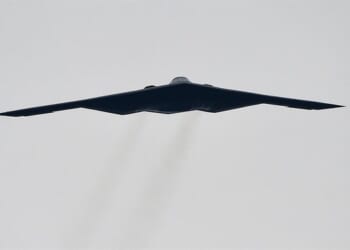Blue Origin, billionaire Jeff Bezos’ space company, joined a very small club on Thursday when it completed its first reusable rocket booster reentry and landing.
The launch, which was Blue Origin’s first for a paying customer, sent two satellites into space for NASA. Those satellites are headed toward Mars to study the impacts of solar wind on the Red Planet, among other things.
The New Glenn rocket booster then reentered the atmosphere and successfully touched down on a floating landing pad.
— Jeff Bezos (@JeffBezos) November 13, 2025
Good overview of the landing. We nominally target a few hundred feet away from Jacklyn to avoid a severe impact if engines fail to start or start slowly. We’ll incrementally reduce that conservatism over time. We are all excited and grateful for yesterday. Amazing performance by… pic.twitter.com/DCEMsuSyPm
— Jeff Bezos (@JeffBezos) November 14, 2025
— Jeff Bezos (@JeffBezos) November 13, 2025
Acting NASA Admin Sean Duffy said of the launch: “Congratulations to Blue Origin, Rocket Lab, UC Berkeley, and all our partners on the successful launch of ESCAPADE. This heliophysics mission will help reveal how Mars became a desert planet, and how solar eruptions affect the Martian surface. Every launch of New Glenn provides data that will be essential when we launch MK-1 through Artemis. All this information will be critical to protect future NASA explorers and invaluable as we evaluate how to deliver on President Trump’s vision of planting the Stars and Stripes on Mars.”
Blue Origin’s successful reentry and landing puts the company on more equal footing with Elon Musk’s SpaceX, which pioneered reusable rocket technology and had its first successful reentry and landing in 2015.
Since then, SpaceX has landed and recovered many boosters, and has caught three with the “chopsticks,” a pair of giant mechanical arms.
In 2023, Blue Origin won a $3.4 billion contract with NASA to develop the “human landing system” for the space agency’s Artemis V mission.
“Blue Origin will design, develop, test, and verify its Blue Moon lander to meet NASA’s human landing system requirements for recurring astronaut expeditions to the lunar surface, including docking with Gateway, a space station where crew transfer in lunar orbit,” NASA said in a press release.

















